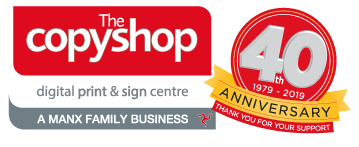Why isn’t Microsoft Word recommended as a page layout application?
Many people recognize that Microsoft Word has page layout capabilities. Over the years, Microsoft has developed Word to be much more than just a simple word processor. In its most recent version, Word has been developed to become a page layout application as well as the most popular word processing application in the world. In fact, you can actually create a fairly complex document using Word. So what’s the problem with using Word to design pages?
You’ve worked hard on your document, and you’ve tweaked it just right – it looks great printed on your laser printer. You’re now ready to take the next step and get your masterpiece commercially printed. You would think it would be as easy as copying the Word file to a disk, and sending it off to the Copyshop for printing. But it’s not that easy. Microsoft has failed to add critical functionality to Word. This makes it difficult get professional and consistent high-end output from this very popular application.
Commercial printers and prepress facilities cringe when then receive Microsoft Word files because it means many problems are lurking inside the seemingly harmless files. Commercial printers are faced with the following four primary problems when working with native Microsoft Word files.
FONT PROBLEMS
Font conflicts are the single most frequent problem with Microsoft Word files. Word does a poor job of managing fonts. In fact, Word will automatically – and without warning – substitute your specified document fonts with fonts that happen to be active on the local workstation. So while your file looks right on your computer, it may look entirely different on another computer. In extreme cases, symbol fonts used in the document are substituted with totally different symbol fonts – making the document completely wrong.
With that said – you should know that in most cases, Word’s font substitution is intelligent, and the software usually substitutes with fonts that look relatively close to the specified font. Sometimes the difference is so subtle that you might not be able to tell the difference.
So what’s wrong with fonts that look “just a little bit different?” In most cases, the substituted fonts do not have the exact character spacing as the specified font. This minor spacing difference, over multiple pages, will usually add up to significant type reflow. So unless the fonts on each workstation are an exact match, you will most likely have multiple font problems when submitting your job to any printer.
BLEEDS
Word does not offer any functionality with regard to bleeds. If any type of bleed is required, then significant additional work will be required at the prepress stage. For example, a simple running tab that requires a bleed would require extensive (i.e. costly) additional work at the prepress stage. To add the bleed properly, .an application technician must manually modify the bleed elements on each individual page. So in a 1,500 page document this could delay your project significantly and also add significant cost that you were not planning on.
COLOUR
While Word allows you to specify the color of type and graphics, it does so only in RGB. Word does not offer the option to specify process colours (CMYK) or spot colours. This means that if you need to use color in your document, it will require significant operator intervention to set the colours to separate properly. This is especially true for spot colours. Again, this means additional unplanned cost for your job.
PRE-PRESS OPERATOR CONTROL
Finally, in the normal course of preparing jobs to be printed, experienced prepress operators sometimes need to tweak files to make them work. Word files are very touchy, and in most cases operators are unable to make necessary corrections without causing reflow throughout the document. Often, the Word files need to be returned to the client for correction.
So what’s the solution? Using a page layout program such as QuarkXPress or InDesign will help to solve all of these problems. These page layout programs are ubiquitous in graphics arts and the professional design community. The Copyshop has prepress operators on staff that are intimately familiar with these applications.
Of course, you don’t have to give up Microsoft Word altogether. While QuarkXPress and InDesign have capable wordprocessing facilities, you can continue to use Word to compose the manuscript. Once you’re ready to work on the layout, simply flow the Word document into a page layout document, and finish the document there.
While there is an investment required to learn to use QuarkXPress or InDesign, when it comes to your projects moving smoothly and ensuring they come out on time and on budget, the investment becomes well worth it.
